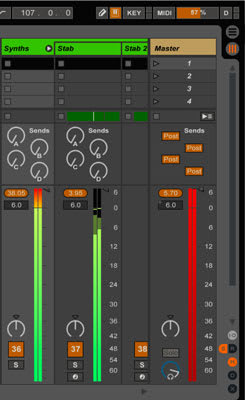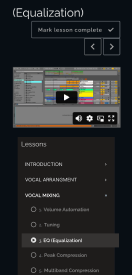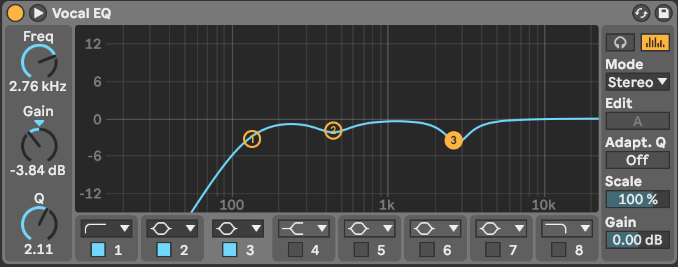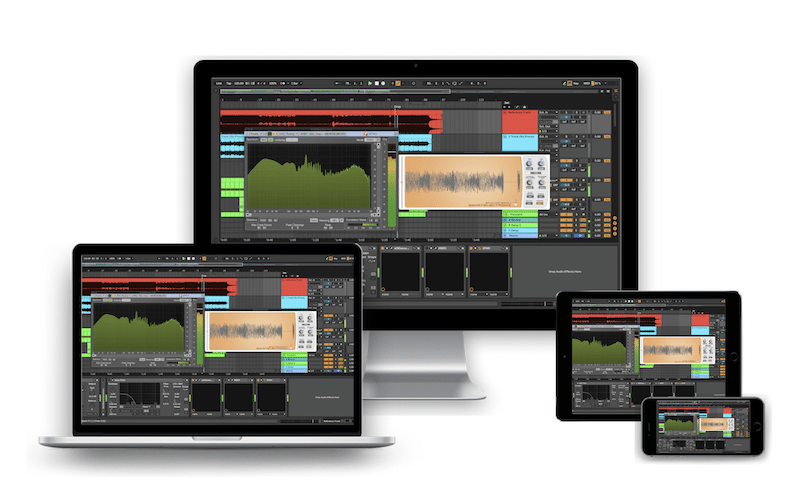Producing a great track is not easy. Ones who do put together a great track understand that things have to be done right from the very start. You need a solid base to build on and that’s why it’s so important to get off on the right foot.
Successful producers understand that sample selection, sound design, mixing and tasteful arrangement all work together to create a great track that people want to listen to over and over again.
In electronic dance music more than any other genre, things can get messy really fast. That’s because you literally have an infinite selection of sounds, samples and mixing techniques to choose from.
Yet so many producers, even experienced ones, fall into the trap of trying to do too much instead of focusing on doing what actually works.
Here are 6 mistakes you should watch out for as you’re working on your creations. I call them “mix killers” but they don’t necessarily just apply to mixing.
MIX KILLER # 1. USING CRAPPY SAMPLES
s there an unwritten rule somewhere that says you have to use the same samples everyone else is using?
Seriously it’s like every production HAS TO use the same kicks, snares, hats and percussion to sound good.
You know how it goes. You’re trying to finish your track, you’re trying to make it sound good and it’s just not working out.
So you start going through your sample packs. You’re desperately trying to find a kick that sounds JUST like the one from that crazy track you heard from some famous producer. Then, by some miracle or by the lucky droppings of a blessed pigeon you actually find the actual sample.
Now it’s on. Now your track is going to be the BOMB.
Fast forward half an hour later and you’re right back where you started and maybe even contemplating closing your DAW without even saving the track.
There’s a reason this happens. Trying to sound like someone else usually doesn’t end well. Sounds can’t be forced to work together, they have to chosen and designed to do that.

So just be yourself. Here’s a shocking revelation for you. Sound designers and sample producers want to sell their samples (!!), and good on them for doing so because where would we all be without them?
Here’s the thing. Any sample can be a good sample, and any good sample can be a crappy one. It all depends on the context. Whatever sample you use has to work in the context of the track you’re working on. It has to match the feel, the energy you want to portray, the sounds you chose and pretty much everything else.
Now that’s not to say that all samples were created equal. Yes, there are actually crappy samples out there that you should avoid. I’m talking about ones ripped from mp3’s, have weird artifacts and noises from other instruments, and other similar atrocities.
So… pick a good, clean sample to start with and make sure it’s what works for your track.
MIX KILLER # 2. LAZY SOUND DESIGN
I can’t stress this enough. You can’t force sounds to work together. You have to purposely choose and design them to do that.
Just like with choosing the right samples, you need to design the right sounds, or pick the right presets (no shame in using presets as long as you add your personal touch).
Let’s use the famous kick and bass issue as an example. It’s a good example to use because a lot of producers view it as a purely mixing issue. Yes, you can definitely use EQ, compression, and sidechaining to get the kick and bass to better fit. But the real solution is to actually design a bass patch the works with your kick. Or vice versa. Let’s say you start a track by laying down a bass section. Then you’ll want to choose a kick sample that works nicely with that.
Think of the sounds you use and design as parts of a puzzle.
You can’t force puzzle pieces together or you’ll end up with a weird looking puzzle. It’s exactly the same with sound design. If you’re trying to mix a tight, punchy low end, then design the bass sound while listening to the kick and tweak accordingly.

One really good technique I also use is to make sounds from other sounds. So if I design a nice pluck patch, then i might make a bass sound from that same pluck patch. It’s a great way to save time and get a much more cohesive track that doesn’t sound like it’s fighting with itself.
The sounds you choose and design matter, so make them count.
MIX KILLER # 3. not using automation
Have you ever heard a track that held your undivided attention from start to finish? Or listened to a track over and over again without getting bored of it?
What’s the secret to that?
Well, the two previous points we talked about are definitely a part of it, but when it comes to peaking interest and keeping it, automation is where it’s at.
Transitions, breakdowns, drops, filters opening and closing, reverbs getting tighter and then washing away, all of that is automation. It’s what separates a boring, static track from one that commands a listener’s attention. It’s like telling someone “wait where you going?! Watch this…”
Let’s imagine you’re working on a track and you’re putting together a buildup that leads into the drop (like that doesn’t happen all the time right?). Now, let’s say you have vocals in the buildup, a snare roll, synth risers, a bass filtering out and a supersaw lead with a filter opening up toward the end of the buildup. That is going to be one giant mess if you don’t automate at least something.

In this case, you could automate the volume of the vocals to get a little louder when everything starts to kick in. Or you could turn the synths down. This would save you from using extra EQ and compression to keep things under control. It would also preserve dynamics and therefore give the drop more impact.
You could also use automation to EQ and compress things differently at various points of the track.
Let’s say you have a pluck that opens up into a huge supersaw when the chorus hits. You probably want that pluck to sound really full and deep but don’t want it to muddy up the mix in the chorus section. Easy. Just automate a low cut filter or EQ band to cut out more of the low end on the pluck in the chorus section, and then bring back that low end when you need it.
Automation… it’s your friend.
MIX KILLER # 4. OVER MIXING
This is a big one for me. I never understood why you would need 2 EQ’s, 3 compressors and a limiter on a snare…
I’m a huge fan of simplicity, and nothing ruins a good track more than over processing and mixing for the sake of mixing.
Have you ever spent a couple of hours mixing a track, EQ’ing, compressing and tweaking it only to realize it sounded better before? Yeah, it sucks.
Sound is a tricky thing and we’re easily fooled into thinking things sound better after we do something when they really don’t. That’s why volume matching is so important. The next time you drastically boost an EQ band on something, turn the output back down on the EQ and compare it to the unprocessed sound. I can almost guaranteed it will sound fuller, punchier and better before you did that boost.
That’s why you hear so many people talking about cutting more than boosting, or using compression sparingly (unless it’s a sound design decision). Over-processing makes things sound well…over-processed and unnatural.

Stacking more plugins will not make your track sound professional and that’s not even what professional mixers or producers do. As you produce more tracks and gain experience, you’ll find yourself constantly going back to the basics. Design good sounds, choose good samples, and use the tools you have to make them sound even better.
One concept that completely changed the quality of my productions and the way i approach production and mixing is purpose. Every time I want to add EQ, compression, or make a tweak I ask myself why? That’s not to say you shouldn’t experiment and play around, but when it comes to using mixing tools and making mix decision, you need to have a reason for doing what you’re doing.
So, when it comes to mixing in the traditional sense, stick to the basics. Simple EQ, compression, reverb and delay are your bread and butter. When it comes to being unique and developing your own style, go all out.
It’s kind of a paradox but that’s what makes electronic music so unique. There are no rules, just guidelines to help you get better.
MIX KILLER #5. TOO MANY LAYERS
Let’s talk about simplicity and purpose again.
Why do you need 4 different synths playing the same chord progression in the chorus section? Just…why?

I mean fine, if you want to make the chorus section sound huge then make 2 synths playing the same melody or chord progression, but at the very least make them play at different octaves. As with pretty much everything else we’ve talked about before, you need to have a purpose for adding more sounds and layers to a mix.
Are they playing different octaves? Are they playing accompanying harmonies or melodies (call/return)? Are they contributing to syncopation or adding different grooves? Or are they just there to make your mixing life a pain?
The next time you find yourself trying to make things fit for hours or even days just stop, and walk away. Then, come back after a few hours or the next day, take a deep breath and start ditching some layers.
One well designed and mixed synth patch can easily replace 3 or 4. The same goes with bass sounds, kicks, drums and anything else actually. And just like with over mixing, adding more and more layers will not make your track sound more professional. It will only make mixing more difficult and will have you chasing your tail trying to get things to fit.
I know it’s tempting to want to cram as many ideas, melodies and sounds into one track as possible. But you have to resist the temptation. Or, try diverting that temptation somewhere else. For example, if you find yourself wanting to add harmonies and melodies to add complexity, try adding some micro grooves with percussion instead. Or maybe add small break sections and transitions throughout the track where you can add and take away different instruments.
The less moving parts you have in a track, the easier your mixing job will be, and the better your track will sound. There are so many ways to add complexity to a track and it doesn’t have to be by adding more and more layers. Instead trying using things like
- Automation
- Reverb & delay
- More transition and breakdown sections
- More interesting or complex chord progressions
MIX KILLER # 6. TRYING TO MAKE EVERYTHING LOUD
Imagine 10 people charging toward a small door all at the same time.
That’s pretty much what happens when you try to make everything loud in the mix. You end up with a train wreck. On top of that, nothing actually sounds “loud.” Your track ends up sounding mushy and probably distorted without any dynamics or character.

You can’t make everything loud. It just doesn’t work. So here’s what you do.
Decide who’s going to be the star of the show, or the track in this case. Then, prioritize the rest of the elements in your track accordingly. So let’s say you choose the kick to be your primary focus (a wise decision). Then you need to be mixing the rest of the elements in your track around it. You need to make sure it’s always present and punching through no matter what’s happening around it.
If a lead synth is your next priority then mix that right after you get the kick just the way you want it. Mix it while listening to the kick. You can then layer the bass and everything else will follow.
This is called balance.
When you have good balance in your mix then you can make the entire track louder while still sounding full and punchy. But in order to do that you need to get your priorities straight and work accordingly.
CONCLUSION
It’s not your fault.
Producing electronic music can be hard and there are people out there who try and make it seem like this overly complex and complicated thing. But it doesn’t have to be.
If there are only two things you should take away from this article they are simplicity and purpose.
Always have a reason for doing something and keep things simple. Your productions will improve and you’ll be more motivated to produce more and gain experience.
Also, have fun. This is music after all.
Can you relate to any of these things? Do you do other things that you think might be sabotaging your mixes?
Let me and everyone know in the comments!









